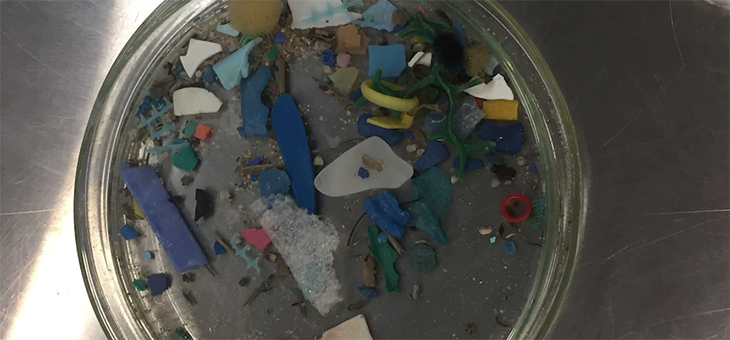Perhaps you’ve seen headlines saying we consume a credit card’s worth of microplastics a week, or that microplastics have been found in our poo.
Now a new research paper has tried to identify the seafoods most likely to contribute microplastics – that is, plastic particles of between 1 micrometre and 5 millimetres – to the Australian diet.
Microplastics abound in the ocean and are often eaten by sea creatures, which means the particles could also make their way into our bodies when we consume seafood.
To work out the risk, researchers from the Australian Institute of Marine Science looked at previous studies of microplastics in seafood and compared it to Australians’ eating habits.
They found Australians were most likely to ingest microplastics by eating bivalves, like oysters and mussels, and a smaller amount via crustaceans like prawns and crabs, although we don’t consume as much of these foods as we might think.
The main type of seafood eaten by Australians is fish fillets – and while microplastics are often found in fish guts, we generally don’t eat that part of the animal.
Lead author Amanda Dawson said previous studies had taken global figures and applied them broadly.
“There’s not enough relevant and reliable data for us to put a nice concrete number on it, which is a bit disappointing,” she said.
“We need to know what’s in there and if it’s going to hurt us.
“And if it’s not going to hurt us, that way we can focus more on the environmental aspect.”
Are microplastics actually bad for us?
When we talk about microplastics, there’s usually an underlying assumption that they’re inherently bad.
But while they are certainly not good for the environment and can cause harm to some animals, we actually don’t know enough about what they do in human bodies to know whether or not they’re unhealthy for us, environmental health scientist Kevin Thomas says.
“There are such major knowledge gaps that it’s really hard at the moment to make a thorough assessment of whether there are any health risks from exposure to microplastics,” said Professor Thomas, who is director of the Queensland Alliance for Environmental Health Sciences at the University of Queensland.
He says the tiniest microplastics, around 2.5 microns and smaller, are the ones most likely to do harm.
But because the term ‘microplastics’ lumps everything from 5mm in size down, the data isn’t there to know how widespread they are.
We also don’t know what these tiny microplastics do inside the body.
Some studies that have looked directly at cells in the lab have found the particles can cause irritation and inflammation in the cells, but Professor Thomas says, “we don’t know whether the plastics actually get into those cells in the first place to cause any inflammation-type effects”.
Most microplastics probably move through the digestive system and come out in our poo, as earlier studies indicate.
But plastic is not as stable as you might think, and factors such as weathering, sun exposure and oxidising can all make chemical and structural changes that might affect how it interacts with our bodies.
So, just because we don’t have the data to show that microplastics cause health problems doesn’t mean they’re safe; it just means we need to get the data, Professor Thomas says.
“Unless you understand where the plastic is coming from, what size it is, what particular plastic it is, and how it’s been formed, it’s really hard to understand whether it’s going to pose any threat.”
 © 2020 Australian Broadcasting Corporation. All rights reserved.
© 2020 Australian Broadcasting Corporation. All rights reserved.
ABC Content Disclaimer

